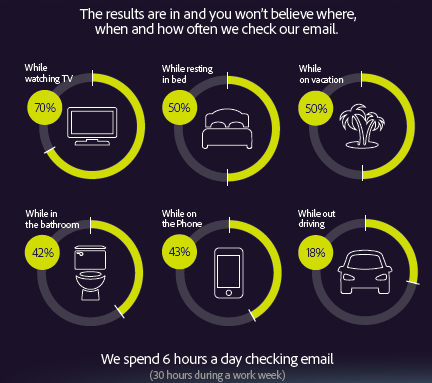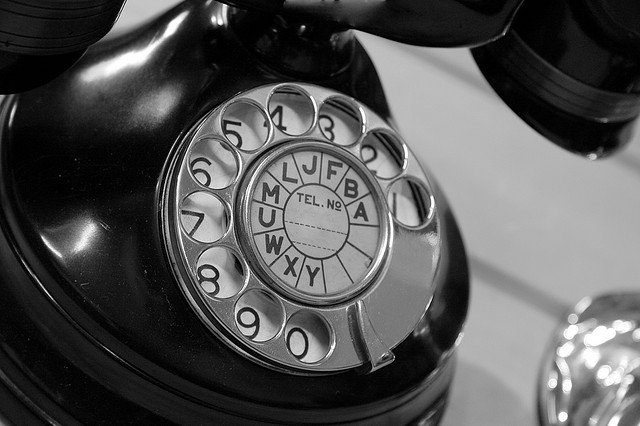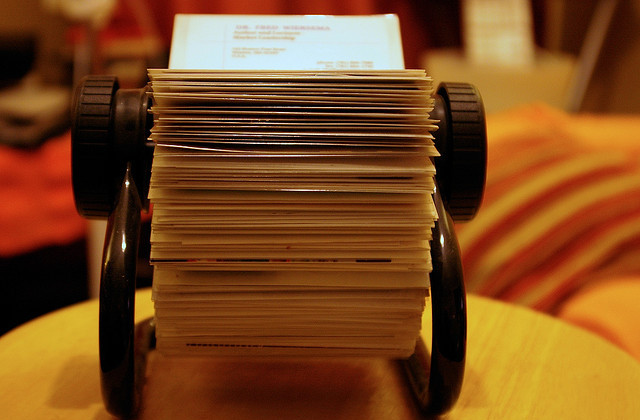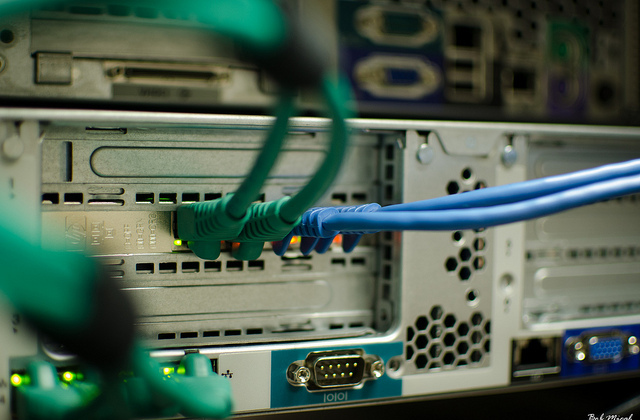“Nobody reads email, least of all millennials.”
How many times have we heard this before? It’s become a truism that millennials don’t use email anymore because they communicate in new ways that have evolved way beyond email’s limitations.
They’re not reading email, the theory goes, because they’ve got more novel ways of engaging with each other (like Snapchat, say, or Instagram). These applications, we’re told, do a much better job of providing them with the sense of immediacy and instant gratification they crave.
But, like so many other things in life, just because it’s a common perception, doesn’t make it true. There’s no doubt email is not as sexy as some of the new methods of engagement that millennials allegedly favor. But the fact remains: email is still, statistically, one of the very best methods for reaching your audience, regardless of their age. This is supported by a recent research study into the email habits of white collar American workers 18 and over.
Conducted by Adobe, the study finds that everyone, including millennials, is reading their emails. And they’re doing it a lot.
Those surveyed spend on average 6 hours a day checking email during the work week. Six hours a day? You heard that right. That’s 30 hours a week (and that doesn’t include weekends)!
Our dependence on email of course extends well beyond the workday. We’re spending a considerable amount of time in our off hours paying at least some attention to what’s coming into our inboxes. Fully 70% of respondents read email while watching TV, 50% read it while resting in bed, and an alarming 42% read their emails while in the bathroom!
It’s no wonder technology is changing the millennial brain.

Source: Adobe Systems
What the findings mean for your organization
If your organization is looking for ways to engage your donors, members, or constituents, it makes sense as we head into 2016 to re-evaluate your email practices and tactics in light of these research findings.
Here are four key factors to consider as you develop a strategy for reaching more people with your email campaigns.
1. Segment your lists carefully
Despite the fact that people are reading emails, the chances yours will get read depends to a great extent on its relevance to your audience. One-size-fits-all messages simply won’t get the job done.
As part of your email strategy, consider which groups of people in your database should be getting each of your messages, then create segments accordingly. Once you’ve got your segments, tailor your messages so they align with the interests and concerns of each of them.
2. Optimize for mobile
Several recent studies have shown that more than half of all emails are opened on mobile devices. Despite this, very few organizations are currently optimizing their emails to be read on mobile devices. As you look at different ways to improve your email campaigns, consider making mobile optimization a high priority by using responsive email designs and landing pages.
3. Don’t overdo it
While the research confirms millennials (and others) are using email constantly, that doesn’t give us a license to send them more and more emails. The emails they’re reading are the ones that contain relevant and engaging content. By sending too many emails too frequently, you run the risk of reducing the impact of your messages and increasing unsubscribe rates.
4. Invest in good tools
There are many tools available now that can help you create and execute sophisticated email campaigns and track your performance, including opens and click-throughs. Cloud-based email products like MailChimp, for example, provide a wide range of useful features and offer different pricing schemes depending on your monthly email volumes and other factors. Investigate the options and start using them to manage and measure your campaigns and results.
Consider these factors as you look for ways to engage more effectively, not just with members of the millennial generation, but with all your email subscribers. Whether you’re a charitable nonprofit trying to engage your donors, a political candidate trying to engage your voters, or an association looking to reach your members, the research indicates that email, when done right, continues to be one of the most powerful engagement tools you have at your disposal.
Image credit: Flickr user stevensnodgrass

Jamie Boyes
Jamie is NetFore’s Vice President of Business Development




